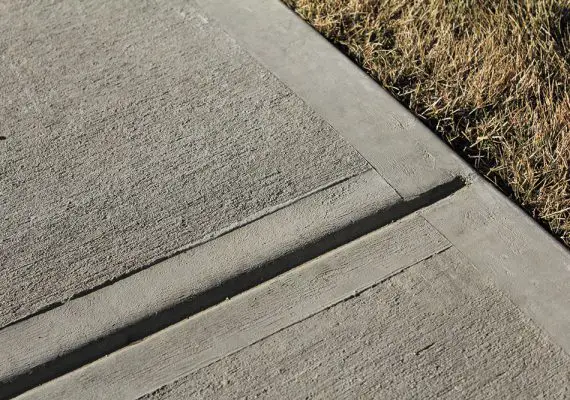What Does Schedule Of Dilapidations Mean?
What Does Schedule Of Dilapidations Mean?
A schedule of dilapidations is a document served by landlords to their tenants setting out the list of items that have been damaged or deteriorated due to their failure to perform their stated obligations within the lease agreement such as repairing and decorating and in some cases reinstatement obligations.
It may also contain an estimation of the costs associated with these issues. By serving this document the landlord can legally require that the tenant takes steps towards rectifying any damage or carry out necessary works before leaving the property in order to protect both parties going forward.
A landlord or their surveyor usually prepares a schedule of dilapidations that outlines outstanding repairs, reinstatement, decorations, and other compliance items.
The schedule may also indicate any clauses of the lease that have been breached, suggest necessary remedial actions and provide an estimate of the repair costs in some cases. If the lease has already expired, the cost may also include the loss of rent during the period when the repairs are being done.
There are three types of schedules of dilapidations: interim, terminal, and final. Typically, it is the terminal or final schedule that specifies proposed remedial works and costs.
However, a landlord may choose to issue an interim schedule of dilapidations while the lease is still in effect to safeguard the value of their property and ensure proper maintenance is being carried out.
💥🎁 Christmas & Year-End Deals On Amazon !
Don't miss out on the best discounts and top-rated products available right now!
🛒 Shop Now and Save Big Today!*As an Amazon Associate, I earn from qualifying purchases.
An interim schedule of dilapidations is generally less detailed than a terminal or final schedule, but it can help prevent severe neglect that might lead to unexpected or unaffordable works. This could leave the tenant with insufficient time to carry out the necessary repairs before the end of the lease.
This scenario would not be in the interests of either the tenant or the landlord, as it could lead to prolonged negotiations, disputes, and higher repair costs. The landlord may even seek forfeiture of the lease to recover possession of the property.
If the tenant fails to carry out the necessary dilapidations works by the end of the lease, the landlord may claim damages from the tenant (a terminal dilapidations claim).
The landlord may issue a ‘quantified demand’ that outlines the losses incurred due to the dilapidations, including loss of rent because of the repair work being done.
It is essential for the tenant to assess the validity of the schedule of dilapidations against their lease obligations and verify the quoted costs. Seeking the services of a surveyor may benefit the tenant in this regard.
How Is A Schedule Of Dilapidations Prepared And Issued?
When a lease comes to an end, landlords may issue a Schedule of Dilapidations to assess if any terms have been breached and if repairs are needed. The Schedule is usually prepared by a surveyor, who inspects the property to identify any disrepair.
💥🎁 Christmas & Year-End Deals On Amazon !
Don't miss out on the best discounts and top-rated products available right now!
🛒 Shop Now and Save Big Today!*As an Amazon Associate, I earn from qualifying purchases.
This is typically done before the lease expires, so that the tenant can make any necessary repairs before vacating the property.
There are three types of schedule of dilapidations. Interim schedules are issued during the lease and inform tenants of immediate issues that need to be addressed.
Terminal schedules are issued during the last few years of the lease and identify specific disrepair issues that require attention. Finally, a final schedule is issued after the lease expires and covers remedial works, including their likely cost.
The primary purpose of a schedule of dilapidations is to ensure the property remains in good condition, protecting its value. They provide a comprehensive assessment of the building’s condition, from its structural integrity to minor damages.
Terminal or final schedules of dilapidations typically outline the required repairs and estimated costs, helping to avoid more costly repairs in the future.
An interim dilapidations schedule may be issued early in the lease to remind tenants of what repairs must be carried out by the end of the lease, helping to avoid unexpected costs.
💥🎁 Christmas & Year-End Deals On Amazon !
Don't miss out on the best discounts and top-rated products available right now!
🛒 Shop Now and Save Big Today!*As an Amazon Associate, I earn from qualifying purchases.
If the repairs are not completed by the end of the lease, the tenant may face a dilapidations claim, which could take the form of a quantified demand.
Tenants should assess the validity of the schedule of dilapidations against their obligations stated in the lease before responding. They should also verify the costs if provided as quotes.
Tenants may benefit from the services of a chartered dilapidations surveyor to help them do this. If a claim goes to court, a property expert witness may be required to contest claims.
In summary, landlords issue a schedule of dilapidations to assess any disrepair and necessary repairs before the lease expires. There are three types of schedule, including interim, terminal, and final.
The primary purpose is to protect the value of the property and ensure it remains in good condition. Tenants should assess the validity of the schedule and verify costs before responding and may benefit from a chartered dilapidations surveyor’s services.
When Should You Use Dilapidations?
Dilapidations should be used when a tenant has not kept up their contracted obligations for the duration of a tenancy. These obligations are usually related to maintenance and repairs that were agreed upon during the lease.
💥🎁 Christmas & Year-End Deals On Amazon !
Don't miss out on the best discounts and top-rated products available right now!
🛒 Shop Now and Save Big Today!*As an Amazon Associate, I earn from qualifying purchases.
According to the Protocol, landlords should serve a schedule of dilapidations within 56 days after the termination of the tenancy, which is considered a reasonable amount of time.
This allows landlords to take legal action to recoup any losses resulting from failing to abide by their responsibilities.
Who Pays For A Schedule Of Dilapidation?
The tenant is typically responsible for paying for schedules of dilapidations and any enforcement actions which may arise from the breach of agreement when commercial leases come to an end.
A schedule of dilapidations is carried out by a surveyor who will inspect the premises and compile a list of works required in order for the property to meet the condition it was initially let under specifying what needs to be done, how much it will cost and who should pay for it.
This document must then be signed off by both the landlord and tenant with any costs associated with repairs or improvement being borne by the tenant
Is A Schedule Of Dilapidations A Notice?
A Schedule of Dilapidations is a notice issued by the Landlord to the Tenant which details any works (dilapidations) that are necessary for the Tenant to comply with the terms of a Lease, such as repairs or decorations needed for compliance with obligations.
💥🎁 Christmas & Year-End Deals On Amazon !
Don't miss out on the best discounts and top-rated products available right now!
🛒 Shop Now and Save Big Today!*As an Amazon Associate, I earn from qualifying purchases.
The Schedule sets out a list of specific works that must be done and gives information about who should carry out the works when they must be done what materials should be used and how much it is estimated to cost.
It also serves as an official reminder from the Landlord that any dilapidations are their responsibility and should be addressed promptly.

